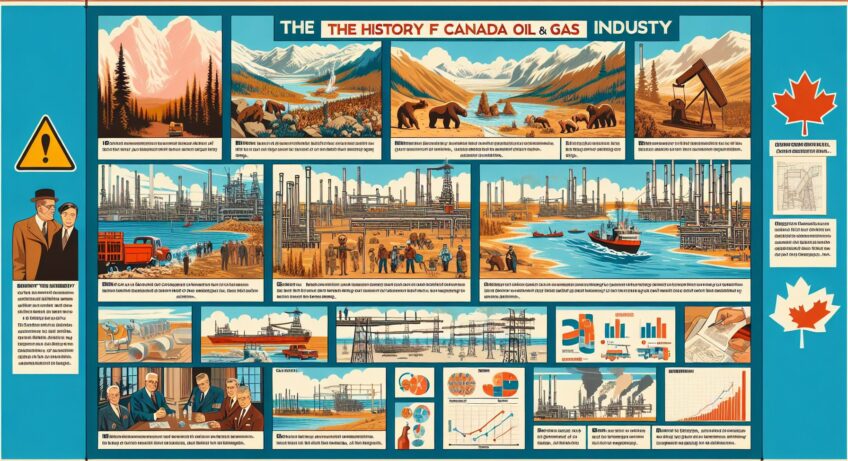Canada’s oil and gas industry has long been a subject of fascination for many. From the vast reserves nestled within its breathtaking landscapes to the constant debate around environmental impact, it’s a multifaceted industry that elicits both awe and concern. In this article, we delve into the often untold story of Canada’s oil and gas industry, uncovering its complexities and shedding light on its significance in our modern world.
A Canvas of Vast Potential
Canada is home to the world’s third-largest oil reserves, after Venezuela and Saudi Arabia. With an estimated 167.7 billion barrels of proven oil reserves, the country boasts an abundance of natural wealth. These reserves are primarily found in the oil sands of Alberta, where a unique mixture of clay, sand, water, and bitumen lies beneath the Earth’s surface. Extracting and processing this bitumen is no easy task, but it provides immense economic opportunities for the region and the country as a whole.
Balancing Economic Growth and Environmental Concerns
However, with great potential comes great responsibility. The extraction of oil from the oil sands requires significant amounts of energy and water, resulting in higher greenhouse gas emissions compared to conventional oil production. This has fueled ongoing debates surrounding the industry’s impact on climate change and environmental conservation. As global efforts to combat climate change intensify, striking a balance between economic growth and environmental preservation is key.
Innovations and Sustainable Practices
Amidst these debates, the oil and gas industry in Canada has been making strides towards sustainability. From reducing energy consumption and carbon emissions to investing in alternative energy sources, companies are actively seeking ways to minimize their environmental footprint. Technological advancements have played a vital role in driving these initiatives forward. For instance, the development of solvent-assisted extraction techniques has significantly reduced water usage in oil sands production. Moreover, investments in renewable energy projects showcase the industry’s commitment to a cleaner and greener future.
Economic Contributions and Job Opportunities
Canada’s oil and gas industry serves as a major contributor to the nation’s economy. It accounts for a significant portion of the country’s total exports and provides thousands of jobs across various sectors. The industry not only supports employment within the oil and gas sector itself but also stimulates other industries such as manufacturing, transportation, and construction. This interdependence fosters economic growth and prosperity for communities across the country.
Looking Ahead
As we navigate the complex landscape of energy consumption, the future of Canada’s oil and gas industry remains uncertain. The push for renewable energy sources, accompanied by stricter regulations and international commitments to reduce greenhouse gas emissions, poses both challenges and opportunities. The industry must adapt and embrace innovation to ensure sustainability and continued economic growth.
Conclusion
The oil and gas industry in Canada is far from a monolithic entity. It’s a captivating tapestry of immense potential, environmental concerns, technological innovations, economic contributions, and an uncertain future. As the industry continues to evolve, striking a balance between economic growth, environmental sustainability, and the well-being of communities will be paramount. It is through collaboration, investment in research and development, and a commitment to responsible practices that Canada’s oil and gas industry will write its next chapter in history.

